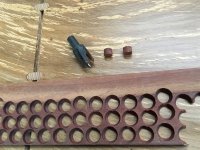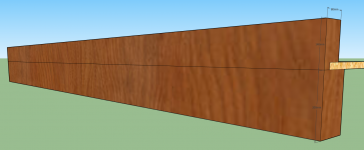threesixright
Member
- Joined
- Aug 17, 2017
- Messages
- 655
Hi!
I'm lost in the SPAX screws(heads) :-[.
I need to join to 2 timber beans, one 120x200 mm (w*h) and on top goes a 80x140 mm (w*h) (the length is ~ 3 meters). So total height is ~ 340 (metric).
I was looking at SPAX screws and see different head types, but to understand which one to use is getting academic [scared]. I hope someone can get me some advice which screws to use. I was thinking of 200 or 220 length :-\
Headtypes:
- cylindrical
- washer
- countersunk
https://www.spax.com/uk/products/construction/cid-8/
Much obliged,
--
Rog.
I'm lost in the SPAX screws(heads) :-[.
I need to join to 2 timber beans, one 120x200 mm (w*h) and on top goes a 80x140 mm (w*h) (the length is ~ 3 meters). So total height is ~ 340 (metric).
I was looking at SPAX screws and see different head types, but to understand which one to use is getting academic [scared]. I hope someone can get me some advice which screws to use. I was thinking of 200 or 220 length :-\
Headtypes:
- cylindrical
- washer
- countersunk
https://www.spax.com/uk/products/construction/cid-8/
Much obliged,
--
Rog.




